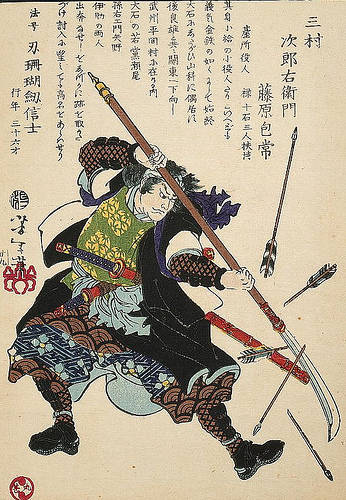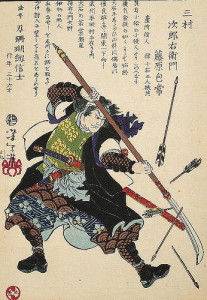Traditional martial arts all have a long history of intense, sometimes downright brutal, physical training to forge the warrior’s combative body, mindset, and spirit.
This training has, up until very recently in history, never been optional. If you did not have the strength of will to endure it and push through then you simply did not make the cut and were not taught higher level skills. Not that you would be considered somehow unworthy or anything silly like that, but you would be thought physically incapable and therefore not worth the teacher’s time to train you.
Each school of martial art had its own type of tanren or forging process to harden the aspiring martial student.
For too many years Traditional Martial Arts (TMA) have hidden behind a mystique of their techniques being “too deadly” and the false pretense of belief that technical prowess alone is enough to survive a combative engagement. Unfit black belt “masters” with chi bellies spilling over their gi pants, obscuring the view of their shoes have unwittingly tarnished the proud and hard earned reputation of real TMA.
On the other hand, Modern Mixed Martial Arts (MMA) with its willingness to experiment, innovate, create, train strength and conditioning alongside technical skills, and to put it all on the line is rapidly pushing past TMA in not only popularity, but also respect. MMA athletes train extremely hard, constantly challenge their own limitations, and physically prepare the body for combat in the ring or the cage. They take their preparation very seriously because they know that the more you sweat in training the less you bleed in battle. Technical skill is not enough. Often it is the better conditioned warrior who wins the match.
Ancient Techniques – Modern Applications
What the majority of MMA athletes, fans, and devotees out there may not realize however is this simple fact: all of the techniques used in MMA today have their origin in the traditional martial arts. Brazilian Jujitsu, arguably one of the most popular and respected of the mixed martial arts today, is derived from Japanese Judo. Judo, a sport in its own right, was developed by Jigaro Kano from traditional Japanese Jujutsu. These techniques are not new. They are not original and they are not unique. They have been used in life and death combat since the dawn of time and were organized, systematized, and put together over the centuries by the founders of Traditional Martial Arts. So what is the disconnect here? What happened to TMA along the way why are we the laughing stock and the butt of so many jokes when once we were warriors?
In my opinion, it began when teachers of the traditional martial arts started systematically removing physical preparation standards from the curriculum. Technique alone is not enough. They can never be “too deadly for combat” when the trainee does not possess the physical ability to fight his way out of a wet paper bag, much less apply a martial technique on a resisting opponent. Physical training serves as the platform for all higher level skill development in the martial arts. By removing this platform modern TMA has severely weakened itself, and by default, all of its students and teachers alike. Without this type of intense training and focus on the foundational physical preparatory work of the art you cannot do the higher level training. Or, perhaps a more accurate way to state this is that you can mimic or imitate the higher level skills at a superficial level, but you do not own them because your training castle has been built upon a foundation of sand.
Martial arts are physical pursuits
As Masaaki Hatsumi, Bujinkan Budo Taijutsu Soke, is fond of saying, “Budo is not an academic subject!”
Severe physical training not only serves to prepare the warrior physically, but acts as a bridge connecting the physical body to the mental and the spiritual. As the body is pushed harder, beyond the perceived physical limits, the warrior directly engages and develops spiritual strength.
The first step in bringing high quality STRENGTH & CONDITIONING training back to Traditional Martial Arts is here…
Introducing WARRIOR UNIVERSITY – It’s Time to Get Your Black Belt in the Martial Art of Fitness!







4 Comments
Greg
April 12, 2013And you’ll notice that the Japanese Shihan don’t look or move like they’re 70 to 80 years old… No matter what the art, look at the people who are good. (not just rank) I agree with Jon that it’s not hard to tell who is training correctly, just by their physical appearance and capabilities.
Jon
April 12, 2013Thanks Greg!
Felix Niland
May 11, 2017Too true. Great article. Shouldn’t be optional!
Jon
June 29, 2017Thanks Felix!
Leave A Response